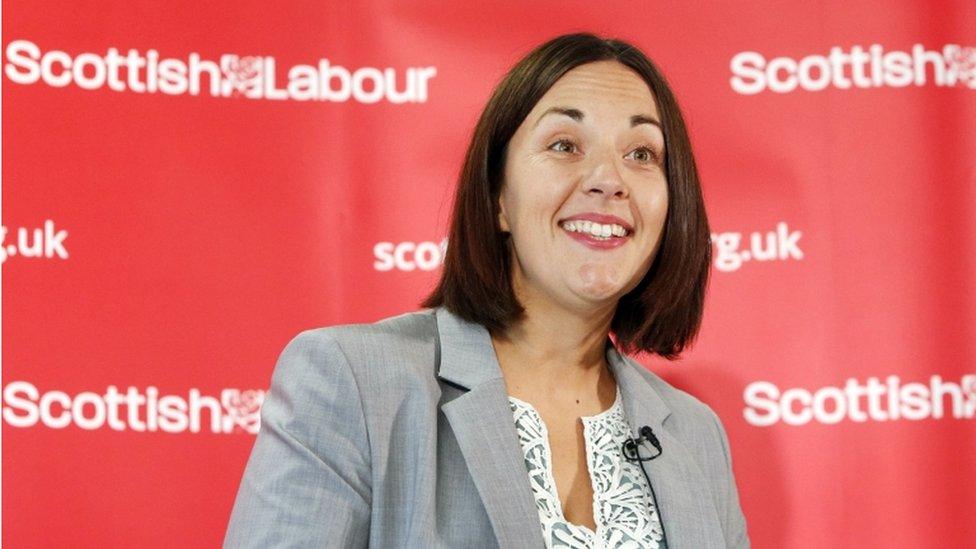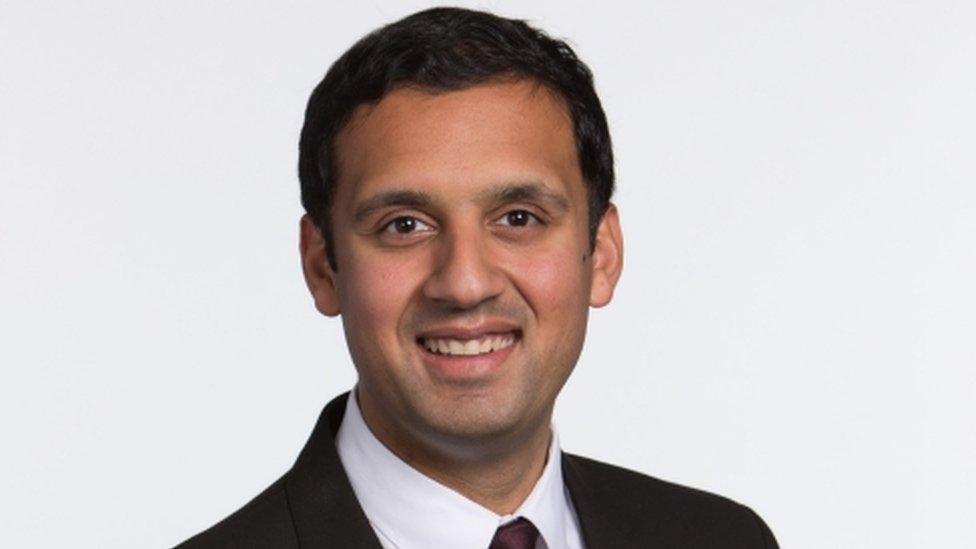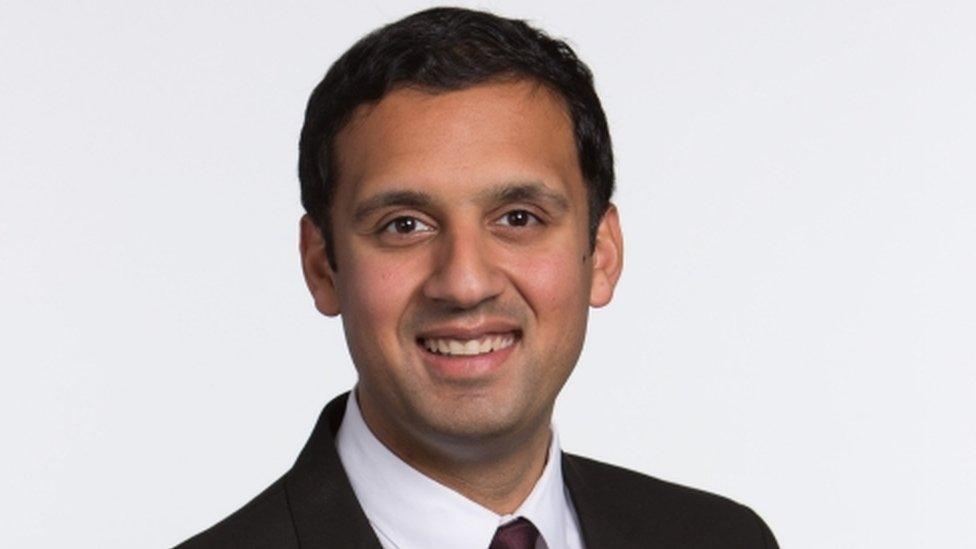Scottish Labour unveils candidates list
- Published

Scottish Labour leader Kezia Dugdale is top of the party's list for the Lothian region
Scottish Labour has released the names of its Regional List candidates for the Scottish Parliament election in May.
Party leader Kezia Dugdale, who tops the list for the Lothian region, said the candidates were a balance between "new blood and experience".
But several current MSPs look unlikely to be re-elected through the list system.
Ms Dugdale said the party was in "no doubt" about the scale of the challenge it faces.
Polls suggest Labour is neck and neck with the Conservatives in the battle for second place ahead of the election.
They have also suggested that the SNP appears to be on course to win the majority of the 129 seats at Holyrood when voters go to the polls on 5 May.


One of the winners in the list selection is former MP Anas Sarwar
Analysis by Glenn Campbell, BBC Scotland political correspondent
This will be a comeback election for the party's former deputy leader, Anas Sarwar, who lost his Westminster seat last year.
There are some new faces. GMB union official Richard Leonard and councillor Monica Lennon are the first and second placed candidates in central Scotland.
But in most regions, Labour's current Holyrood hierarchy dominates.
Read Glenn's analysis here.

Scottish Labour's list for the Glasgow region was topped by former MP Anas Sarwar, followed by former leader Johann Lamont, current MSP James Kelly and former MSP Pauline McNeil.
Current MSP Patricia Ferguson is sixth, with fellow MSPs Paul Martin ninth, Hanzala Malik eleventh and Anne McTaggart twelfth.
Elsewhere, the Central list is headed by GMB union activist Richard Leonard and South Lanarkshire councillor Monica Lennon, ahead of current MSPs Mark Griffin, Elaine Smith, Margaret McCulloch, John Pentland and Michael McMahon.
And MSP Ken Macintosh, a former leadership candidate, finished fourth in the West of Scotland region behind fellow MSPs Jackie Baillie, Neil Bibby and Mary Fee.
Former leader Iain Gray topped the South of Scotland list, with Jenny Marra leading the North East region, current deputy leader Alex Rowley top in Mid Scotland and Fife and Rhoda Grant heading the Highland list.
'Full of confidence'
Scottish Labour said 62% of its party members in Scotland voted in the contest.
Ms Dugdale said: "I am absolutely delighted with the talented group of people who have been selected as Scottish Labour candidates.
"From experienced MSPs to new young candidates, from former teachers to trade union officials, and from small business owners to charity workers - this is an impressive list of candidates.
"We are in no doubt about the scale of the challenge we face, but Scottish Labour heads into the election in May full of confidence in our vision for Scotland."
The SNP, external, Scottish Conservatives, external, Scottish Liberal Democrats, external and Scottish Greens, external have already published their regional lists.
SNP MSP Joan McAlpine said the Labour list was a "disaster" for Kezia Dugdale as the "same old faces have scooped the top spots".
She said it left the Scottish Labour leader with a "near-impossible task of breathing some life into a party which has already lost nearly all credibility in the eyes of the Scottish public".
Ms McAlpine added: "This latest blow for Kezia Dugdale comes hot on the heels of polls showing Labour in Scotland slipping into third place behind the Tories - and with their disastrous plans to tax poorer workers to make them pay the price of Tory austerity unveiled this week, they are a party which is still going backwards."

How are Scotland's 129 MSPs elected?

Each voter has two votes
The first vote is used to elect a constituency MSP in each of the country's 73 constituencies
This is done through the same "first past the post" system that is used for UK general elections
The second vote is used to elect seven additional regional MSPs - sometimes referred to as list MSPs - from each of eight parliamentary regions
Voters vote for a party rather than a candidate
The parties are then allocated a number of additional members to make the overall result more proportional
The regional MSPs are selected from lists compiled by the parties

- Published6 February 2016
